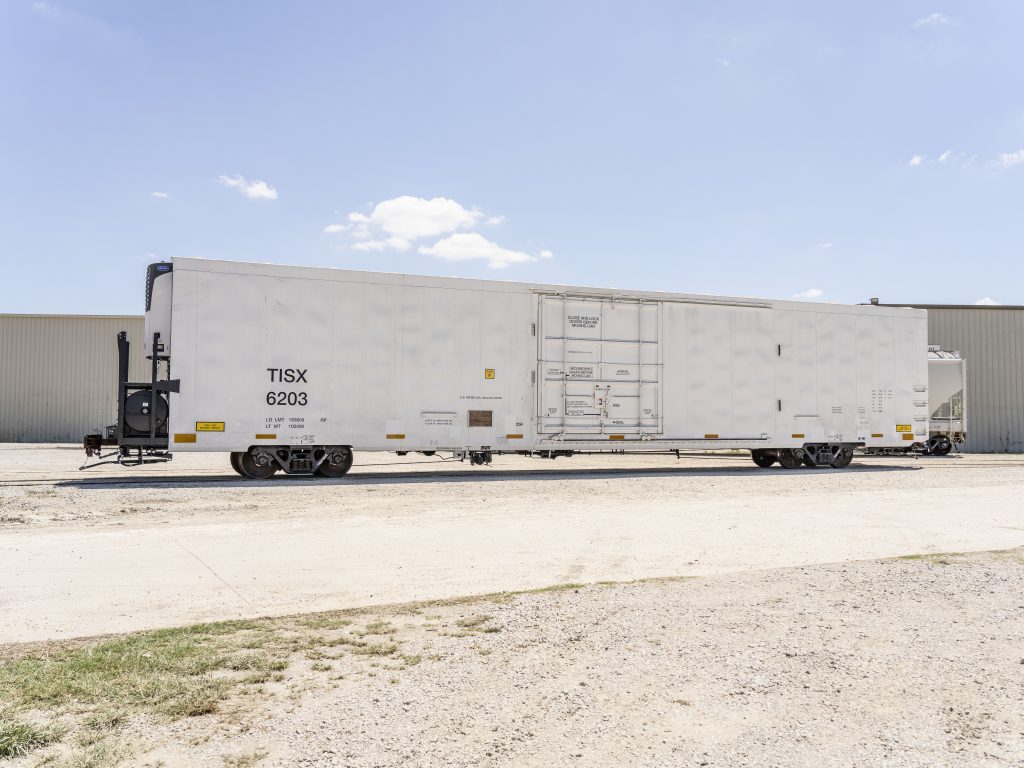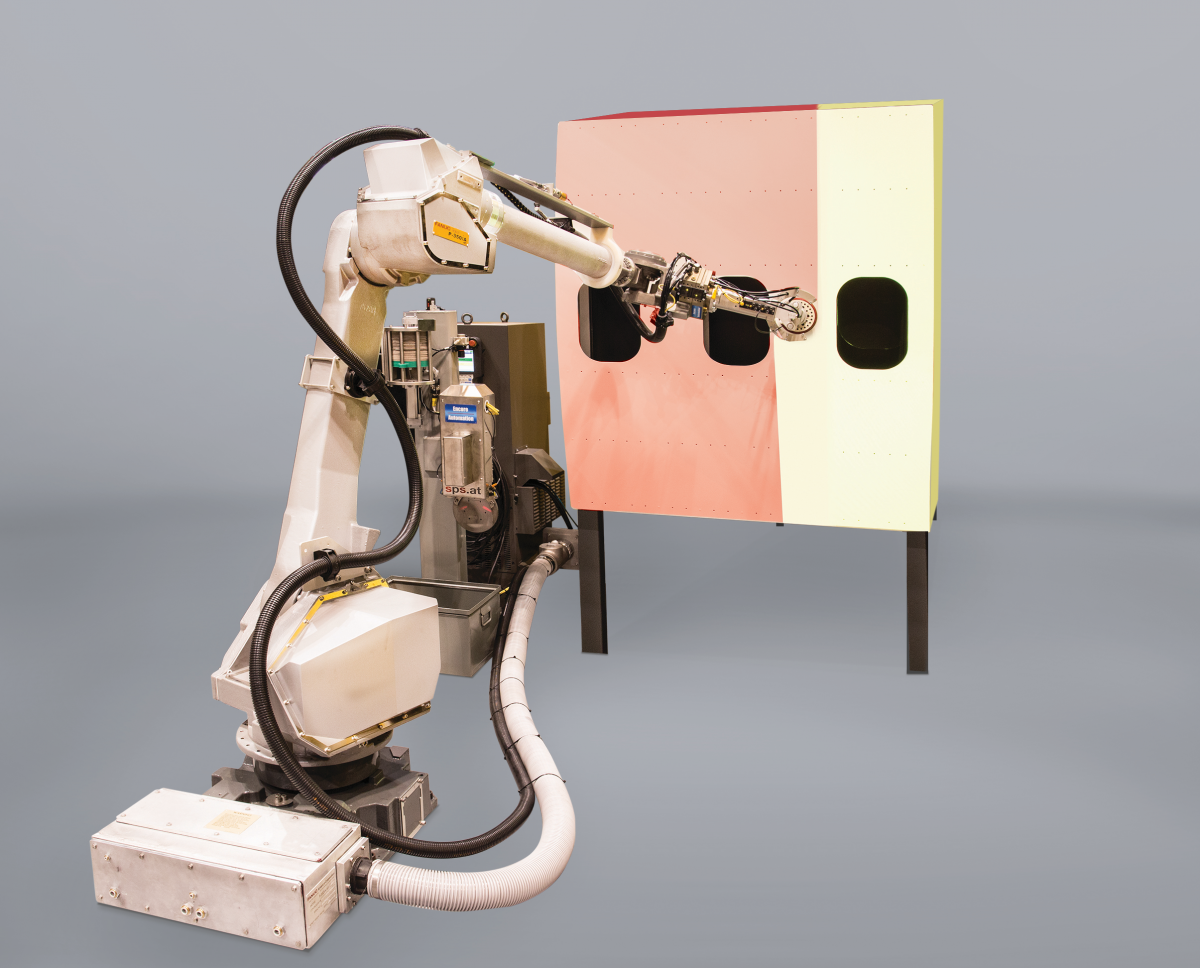

Refrigerated Boxcar Benefits from FRP Floor
When the team at Dallas-based TrinityRail was pitched the idea of applying a weight-saving composite solution to its railcars, the first question was where to start.
“We investigated four to six different projects and decided the refrigerated boxcar floor was the best place to begin,” says Kenneth Huck, principal engineer for TrinityRail.
What started out as an opportunity to reduce the weight of the railcar – allowing more goods to be loaded before a railcar meets the Association of American Railroads’ maximum gross vehicle weight cap of 286,000 pounds – has produced a wide range of benefits.
“With the composite floor, not only did we save weight, but the floor is shorter so we added 150 cubic feet more volume to the interior as well,” Huck says. In addition, the strength of the GFRP floor reduces the amount of steel underframe needed to support it. The resulting railcar is approximately 4% lighter and 5% more thermally efficient than using traditional materials, while just as cost-effective.
This last benefit is a big selling point for the flooring, says Peter Hedger, vice president of business development for Composites Application Group, the Tennessee-based composite development firm that brought the partners on this project together.
“When [TrinityRail] finishes scaling, they will be at cost-neutral to current construction. They’re getting all this benefit without adding any cost,” Hedger says. “It really speaks to the evolution of how composites have come into play and how the robustness of the supply chain now allows for economies of scale and automation that have brought costs down.”
TrinityRail’s boxcar primary floor design builds upon technology developed by Wabash National. The Lafayette, Ind.-based manufacturer of commercial transportation vehicles has a long history of incorporating composite solutions within its refrigerated truck bodies. The company served as a contract manufacturer on this project, applying expertise in the production of its 53-foot-long GFRP truck bodies to the development of an 85-foot-long railcar with a 72-foot-long floor. TrinityRail and Wabash worked closely with Structural Composites, a Florida-based composites R&D firm, to fine-tune the design.
The design places a GFRP primary floor between the railcar’s steel underframe and an aluminum secondary floor. By reducing contact between the aluminum flooring and the steel underframe, the FRP material improves the railcar’s thermal performance. However, securing this benefit meant that the composite floor would need to account for thermal expansion differences between the various materials. The solution would also have to withstand vertical and longitudinal forces applied to the floor and transmitted to the railcar underframe in excess of 380,000 pounds.
The design team began with PRISMA® beams manufactured by Structural Composites’ sister company, Compsys Inc. The beams, which feature a high-efficiency polyurethane foam core laminated within a GFRP shell, are molded to a top plate made of friction stir welded aluminum sheet, fabricated by Wolverine Industries.
“We lay the PRISMA beams on top of the CoCure-coated aluminum using a high-performance vinyl ester resin from Interplastics Corp. and standard e-glass chop strand mat, and then vacuum compression mold the part to create a one-piece floor,” Huck explains. “Then we flip that over so the aluminum is on the top side when we install it into the railcar.” This in-mold process means there’s no need for post-processing this layer before it is installed, which reduces flooring installation time.
Steel bars embedded in the beams are used to mechanically attach the primary floor to the railcar underframe. Because of the strength of the composite solution, TrinityRail removed 4,500 pounds of steel from the underframe. This weight reduction allows rail customers to haul two tons more product before hitting regulated weight caps. Fasteners and a patented adhesive from 3M combine the primary and secondary layers of the railcar floor while allowing for the elongation needed for the different coefficients of thermal expansion.
The multi-layer floor design also allows for a unique feature to customize air flow within the railcar and accommodate different loads. A top floor plate laid upon the corrugated aluminum extrusion secondary floor is punctuated by holes that work in tandem with the unsymmetrical corrugation pattern in the secondary floor. When the plates are oriented in one direction, the vent holes sit over open valleys in the corrugation. This allows HVAC return air to flow and vent ethylene emissions from fresh produce to help prevent overripening. Orienting the floor plates in the other direction moves the vent holes over the closed corrugations to lower the temperature for transporting frozen products. The switch is made using Southco quick-disconnect fasteners.
TrinityRail has successfully tested smaller segments of the flooring under simulated forklift testing, proving the solution could withstand a 25,000-pound forklift axle load. “Railcars are designed for a 50-year life, so we tested it to 100 and 150 years of life of use with that forklift and load on it,” Huck says.
The team has also built a prototype rail car to ship to the field for more extensive testing and feedback from customers. Meanwhile, the TrinityRail product development team is already applying lessons learned through this process to its next composites-based railcar solution.
“I can't go into detail of what those are, but we are looking forward to continuing this process of implementing composites within the rail industry,” Huck says.
Megan Headley is a freelance writer in Fredericksburg, Va. She can be reached at megan@clearstorypublications.com.
Event Focuses on Tomorrow’s Transportation
While the railroad industry has a long history in the U.S., other forms of transportation are emerging. One that’s garnering a lot of interest is advanced air mobility. Learn more about this up-and-coming market at ACMA’s Advanced Air Mobility Composites Technology Days, a virtual program on Feb. 8 – 10, 2022. For more information, visit www.acma.today/AAMTechDay.

GFRP flooring reduces the weight of TrinityRail’s new 85-foot-long refrigerated boxcars by approximately 25% compared to floors with traditional materials.
Photo credit: TrinityRail

SUBSCRIBE TO CM MAGAZINE
Composites Manufacturing Magazine is the official publication of the American Composites Manufacturers Association. Subscribe to get a free annual subscription to Composites Manufacturing Magazine and receive composites industry insights you can’t get anywhere else.




